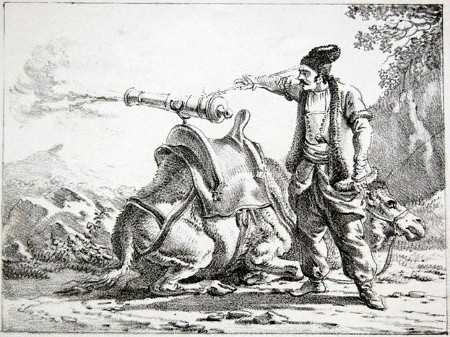
zumbooruk
n. a small cannon fired from the back of a camel

zumbooruk
n. a small cannon fired from the back of a camel
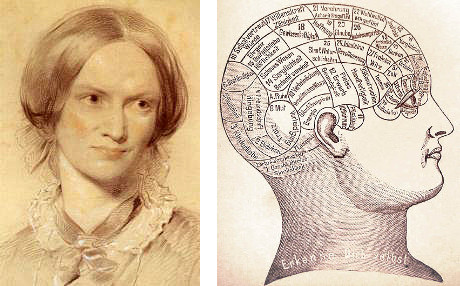
On June 29, 1851, phrenologist J.P. Browne examined a subject he knew only as a “gentlewoman”:
In its intellectual development this head is very remarkable. The forehead is at once very large and well formed. It bears the stamp of deep thoughtfulness and comprehensive understanding. … This lady possesses a fine organ of language, and can, if she has done her talents justice by exercise, express her sentiments with clearness, precision, and force — sufficiently eloquent but not verbose. In learning a language she would investigate its spirit and structure. … In analyzing the motives of human conduct, this lady would display originality and power.
The subject was Charlotte Brontë. She had attended the reading with George Smith, presenting themselves as “Mr. and Miss Fraser.” Phrenology was fashionable at the time, and Charlotte, like many others, was willing to overlook its failures to appreciate its successes. Smith’s reading said, “He is an admirer of the fair sex. He is very kind to children. … Is active and practical though not hustling or contentious.” Smith found this “not so happy,” but Charlotte said, “It is a sort of miracle — like — like — like as the very life itself.”

Another of these dreams he had used as a basis for ‘Pickman’s Model,’ while still another formed the nucleus for ‘The Call of Cthulhu.’ I referred to this story one day, pronouncing the strange word as though it were spelled K-Thool-Hoo. Lovecraft looked blank for an instant, then corrected me firmly, informing me that the word was pronounced, as nearly as I can put it down in print, K-Lütl-Lütl. I was surprised, and asked why he didn’t spell it that way if such was the pronunciation. He replied in all seriousness that the word was originated by the denizens of his story and that he had only recorded their own way of spelling it. Lovecraft’s own invention had assumed an actual reality in his mind.
— Donald Wandrei, “Lovecraft in Providence,” in Peter Cannon, ed., Lovecraft Remembered, 1998
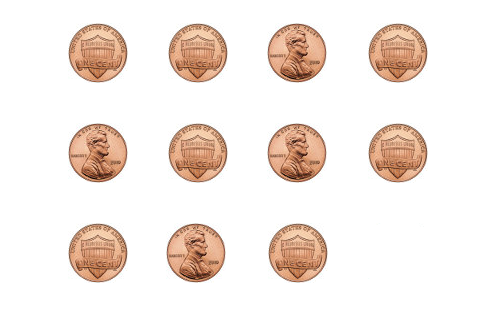
You toss 6 fair coins, and I toss 5 fair coins. What is the probability that you get more heads than I do?
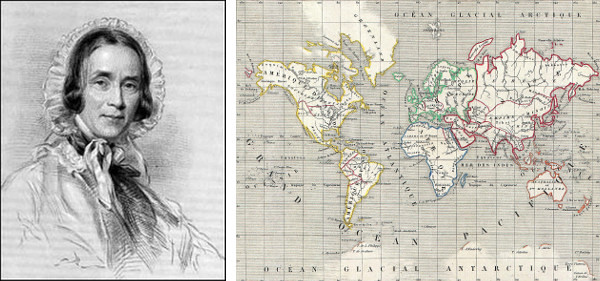
Victorian children’s author Favell Lee Mortimer published three bizarre travel books that described a world full of death, vice, and peril. In this week’s episode of the Futility Closet podcast we’ll sample her terrifying descriptions of the lands beyond England and wonder what led her to write them.
We’ll also review the movie career of an Alaskan sled dog, learn about the Soviet Union’s domestication of silver foxes, and puzzle over some curious noises in a soccer stadium.
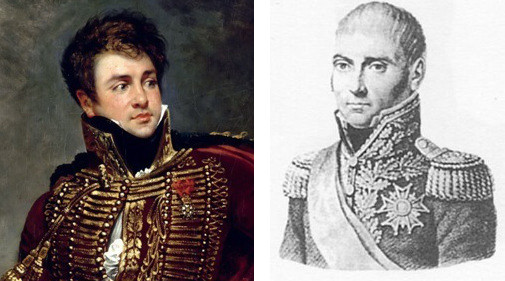
In 1794, at Strasbourg, the French Hussar François Fournier-Sarlovèze challenged a young man to a duel and killed him. When his fellow officer Pierre Dupont de l’Étang denied him entrance to a ball on the eve of the funeral, the fiery Fournier challenged him to a duel. The two fought with swords, and Fournier was wounded.
When he had recovered he challenged Dupont to a second duel, and wounded him. In their third meeting each inflicted a slight wound on the other. Finally the two agreed to a private war that would continue until one of them confessed that he was beaten or “satisfied.” They even drew up a contract:
Over the ensuing 19 years the two fought at least 30 duels, each eventually rising to the rank of general. Finally, after a particularly savage meeting in Switzerland in 1813, in which Dupont ran his sword through Fournier’s neck, Dupont explained that he would be married soon and wanted to conclude the matter with a pistol duel in a nearby wood. Dupont twice tricked his opponent into firing at empty clothing, then advanced on him with pistols primed and claimed his victory. In The Duel, Robert Baldick writes, “Thus ended after a total period of nineteen years, the longest, friendliest and most mobile duel in history.”
(This story is so absurdly romantic that I doubted whether it happened at all, but every source I can find confirms at least the essentials. Joseph Conrad found an account of the rivalry in a provincial newspaper and turned it into his 1908 short story “The Duel,” and Ridley Scott turned Conrad’s story into the 1977 film The Duellists. I’ll keep digging.)

The given name of Prince Edward, Earl of Wessex, is Edward Anthony Richard Louis.
Thus his initials are E.A.R.L.
Nobel Prize-winning chemist Herbert Charles Brown studied compounds of boron and hydrogen in organic chemistry. He joked that his initials reflected his field of study.
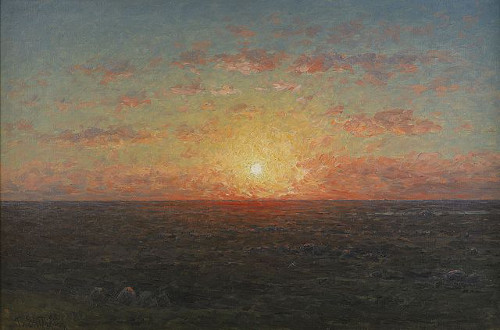
Walter Scott’s 1816 novel The Antiquary met with rapturous praise — the Edinburgh Review pronounced the chapter on the escape from the tide to be “the very best description we have ever met, in verse or in prose, in ancient or in modern writing.”
But, critic Andrew Lang quietly noted, “No reviewer seems to have noticed that the sun is made to set in the sea, on the east coast of Scotland.”
Asked for his opinion of Crime and Punishment, Paul Dirac said, “He describes a sunset, and then a little later the same evening the sun sets again. That kind of mistake does jar on me.”

When Glenn Seaborg appeared as a guest scientist on the children’s radio show Quiz Kids in 1945, one of the children asked whether any new elements, other than plutonium and neptunium, had been discovered at the Metallurgical Laboratory in Chicago during the war.
In fact two had — Seaborg announced for the first time anywhere that two new elements, with atomic numbers 95 and 96 (americium and curium), had been discovered. He said, “So now you’ll have to tell your teachers to change the 92 elements in your schoolbook to 96 elements.”
In his 1979 Priestley Medal address, Seaborg recalled that many students apparently did bring this knowledge to school. And “judging from some of the letters I received from such youngsters, they were not entirely successful in convincing their teachers.”
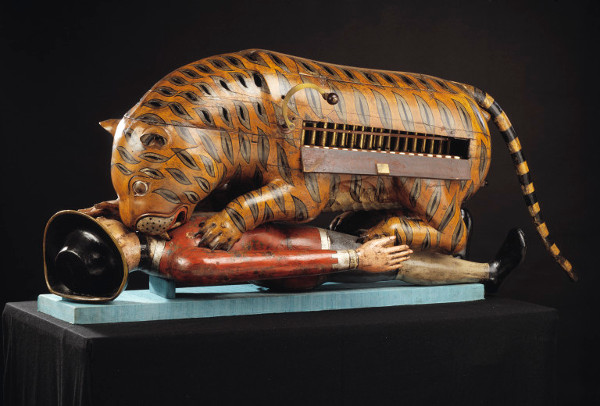
When British forces plundered the palace of Indian prince Tipu Sultan in May 1799, they found an infuriating trophy:
In a room appropriated for musical instruments was found an article which merits particular notice, as another proof of the deep hate, and extreme loathing of Tippoo Saib towards the English. This piece of mechanism represents a royal Tyger in the act of devouring a prostrate European. There are some barrels in imitation of an Organ, within the body of the Tyger. The sounds produced by the Organ are intended to resemble the cries of a person in distress intermixed with the roar of a Tyger. The machinery is so contrived that while the Organ is playing, the hand of the European is often lifted up, to express his helpless and deplorable condition.
Tipu had allied himself with France against the encroaching East India Company, and the Fourth Mysore War brought his downfall. The tiger, it appears, had symbolized his defiance of British colonialism. The instrument was removed to London, where it became a centerpiece in the Company’s Leadenhall Street gallery; John Keats saw it there and immortalized it in The Cap and Bells, his satirical verse of 1819:
Replied the Page: “that little buzzing noise,
Whate’er your palmistry may make of it,
Comes from a play-thing of the Emperor’s choice,
From a Man-Tiger-Organ, prettiest of his toys.”
“Indeed, the horrific image of a wild beast attacking a helpless fellow Briton must have stirred strong reactions in the British audience so few years after the brutal Mysore campaigns,” write Jane Kromm and Susan Benforado Bakewell in A History of Visual Culture (2010). “Contained within one wondrous work of art was an illustration of the intensity of resentment toward European imperialism, the ferocious power of the enemy prince, and the moral justification for colonization.”